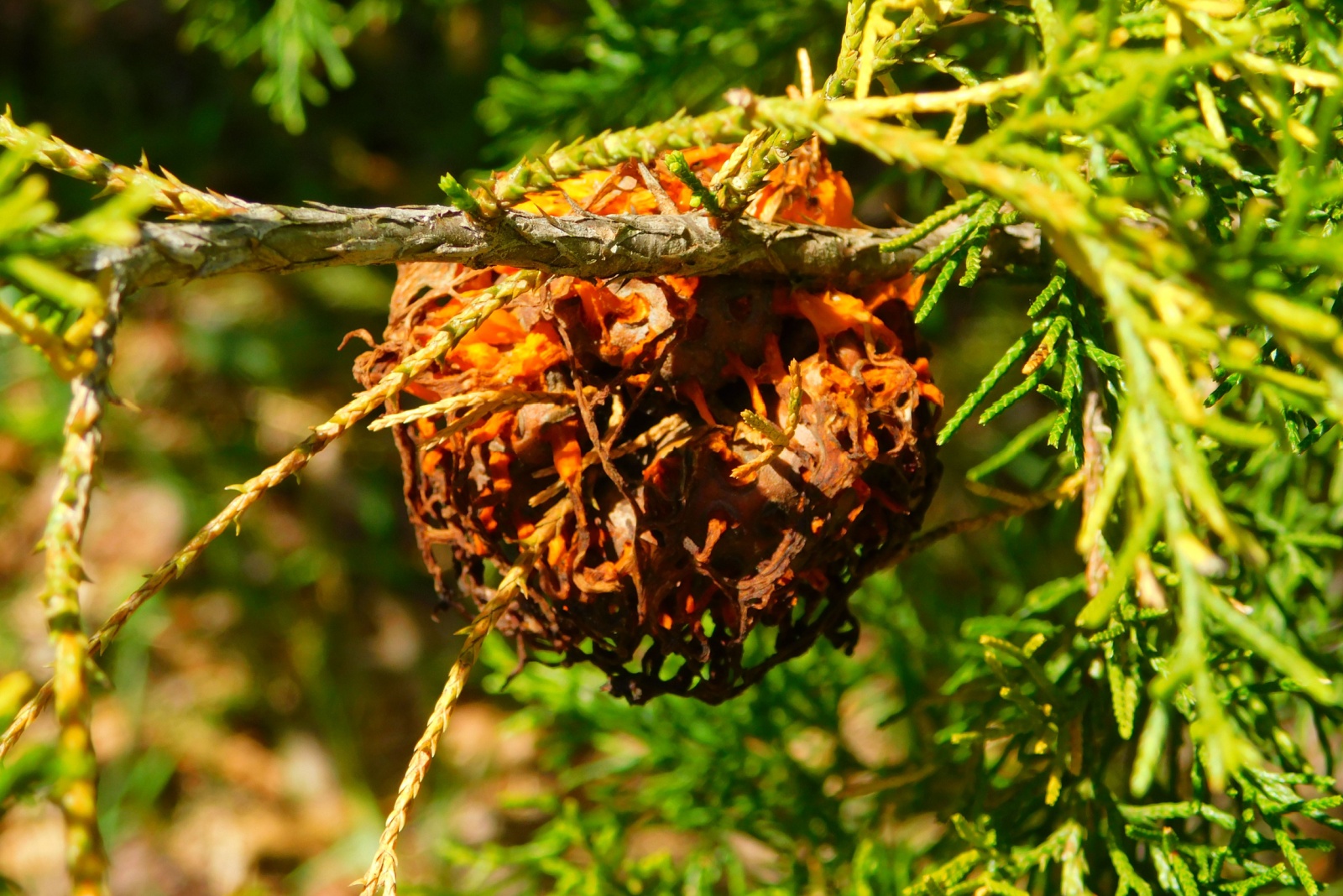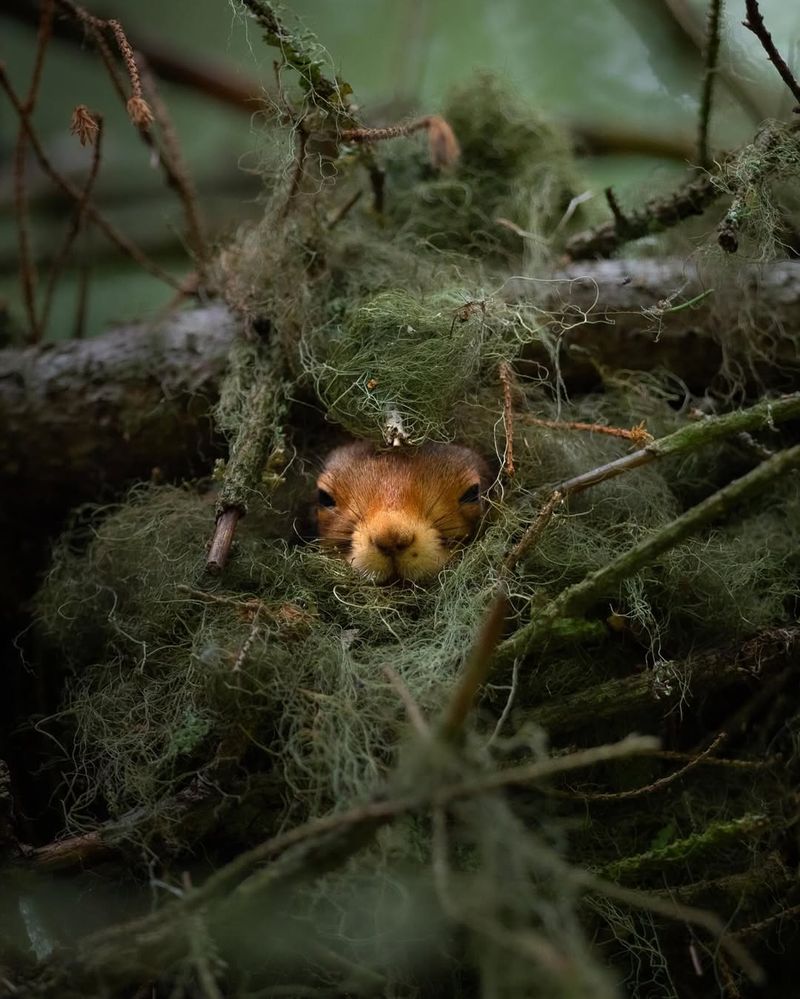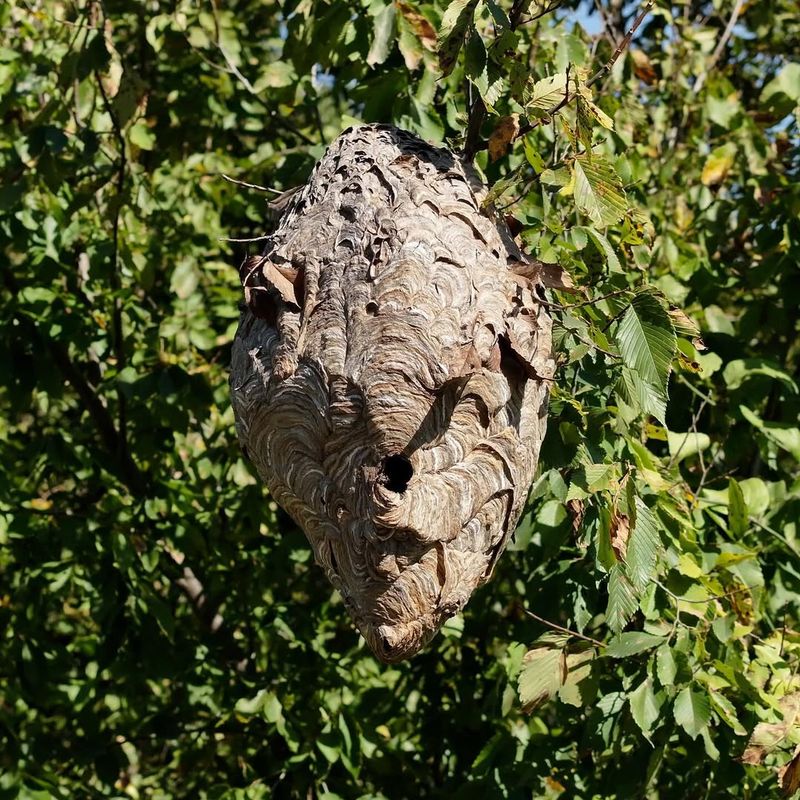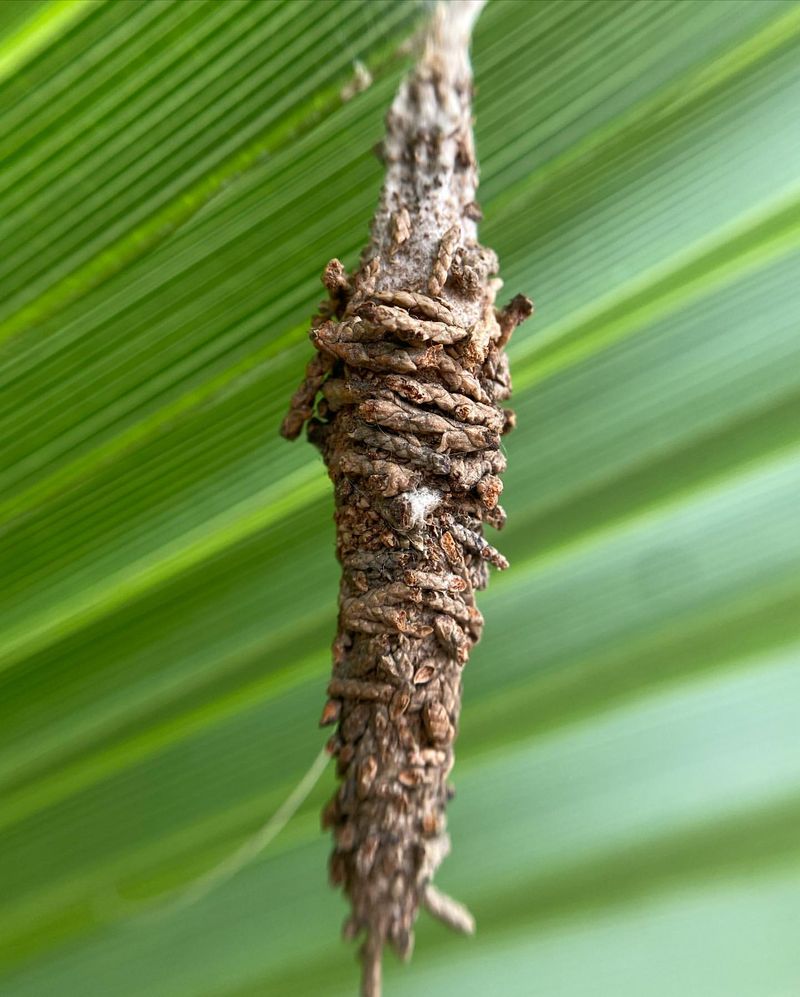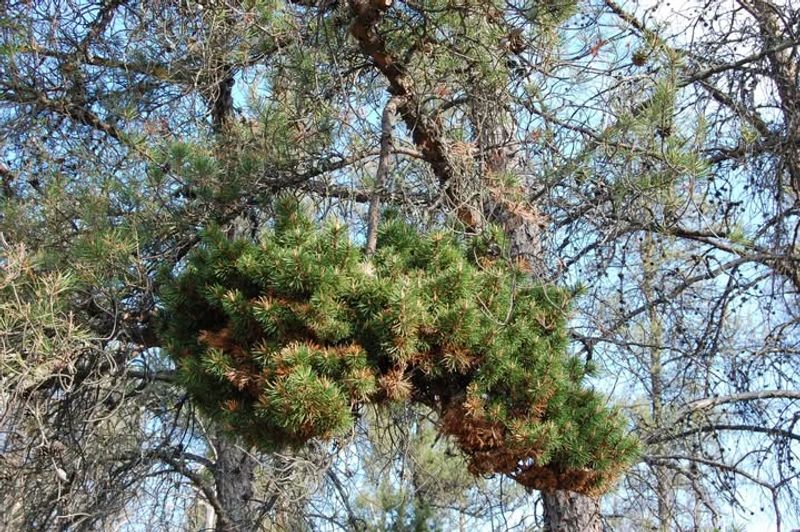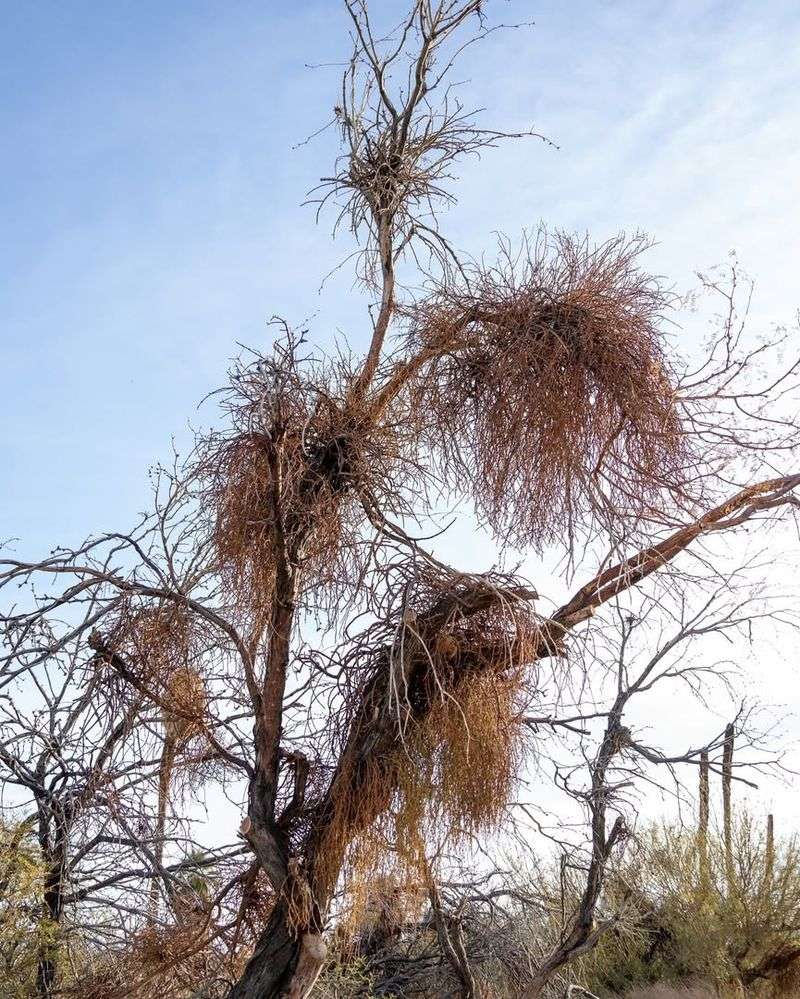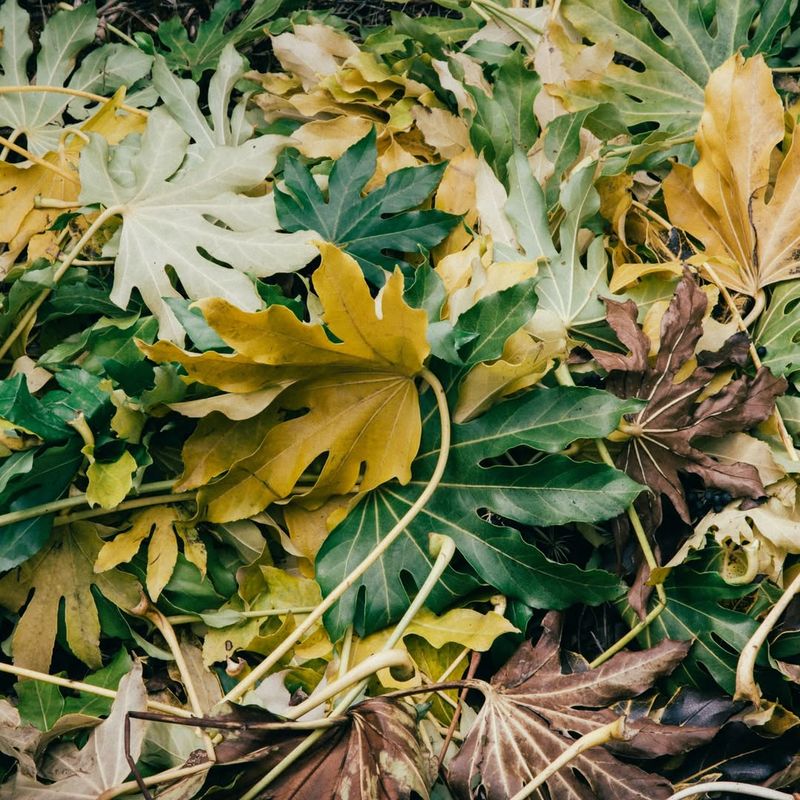If you’ve ever looked up and thought, “Well, the birds sure have been busy,” think again.
That nest-shaped clump in your Arkansas tree might be pulling a fast one—it’s not always feathers and twigs, but sometimes something far more unexpected.
1. Squirrel Dreys
Squirrels build cozy homes called dreys that often get mistaken for oversized bird nests. These leafy bundles are usually basketball-sized and sit where branches meet the trunk. During fall and winter, they become more visible as leaves drop from the Arkansas trees.
A drey has multiple layers with leaves, twigs, and moss woven together. Squirrels create a soft interior lining using grass, bark strips, and even fur. Unlike bird nests, dreys have a solid, dense appearance and often feature two entrance holes for quick escapes from predators.
2. Wasp Or Hornet Nests
Paper wasps and hornets construct nests from chewed wood fibers mixed with saliva, creating a papery gray structure. Some nests hang from branches like lanterns, while others hide in tree cavities. Bald-faced hornets build football-shaped nests that can reach basketball size by late summer in Arkansas.
Always keep your distance if you spot one of these nests. Wasps and hornets defend their homes aggressively, especially during warm months. Most become inactive after the first hard frost, making late fall or winter the safest time for removal by professionals.
3. Bagworm Cocoons
Bagworms create tiny protective cases that dangle from branches like miniature pinecones or ornaments. Each bag measures one to two inches long and contains silk mixed with bits of leaves, twigs, and bark. When dozens cluster together, they might resemble a messy nest from afar.
Arkansas evergreen trees like junipers and arborvitae are favorite targets for these pests. The caterpillars inside munch on foliage throughout spring and summer, potentially damaging your trees. Removing the bags by hand during winter prevents next year’s infestation since eggs overwinter inside.
4. Witches’ Broom
Sometimes trees develop weird bunches of twigs that grow in tight clusters, creating what looks like an old-fashioned broom. Fungi, insects, mites, or viruses cause this abnormal growth pattern. The twigs grow much closer together than normal, forming a dense, nest-like mass.
Hackberry trees in Arkansas commonly develop these growths, though many tree species can be affected. While they look concerning, most witches’ brooms won’t kill your tree. Pruning them off improves appearance, but new ones might develop if the underlying cause remains present in your tree.
5. Mistletoe Clumps
Mistletoe grows as a parasitic plant that forms rounded, bushy clumps in tree branches. During winter when leaves have fallen, these evergreen clusters become super noticeable and might fool you into thinking they’re nests. The plant sends roots into the tree’s branches to steal water and nutrients.
Oak, elm, and hackberry trees throughout Arkansas frequently host mistletoe. While romantic at Christmas, too much mistletoe weakens trees over time. Removing infected branches at least a foot below the mistletoe attachment point helps control its spread and protects your tree’s health.
6. Leaf Debris Accumulation
Wind and storms blow leaves, twigs, and other plant material into tree crotches where branches split. Over time, these materials pile up and compact, forming surprisingly nest-like structures. Vines like grapevines or poison ivy growing through branches can trap even more debris, adding to the illusion.
Unlike actual nests, these accumulations lack any organized structure or woven pattern. They simply collect wherever branches create natural catch-points. Most are harmless, though heavy debris piles might hold moisture against bark, potentially causing rot. A simple rake or stick can usually dislodge them safely.

